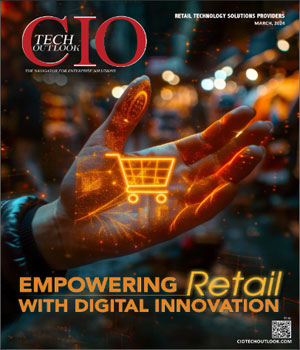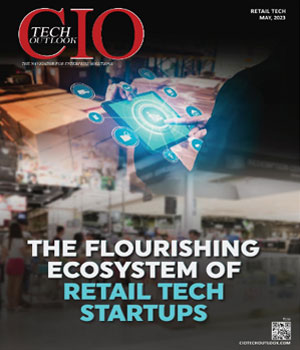
Predictive Analytics In Supply Chain Management
Ajay Yadav, Head It (North), Arshiya Rail Infrastructure | Wednesday, 21 August 2019, 04:17 IST
 Some companies have built their very businesses on their ability to collect, analyses, and act on data. Every company can learn from what these firms do. The tsunami of big data created by the Internet of Things (IoT) demands that companies employ intelligent data management techniques to separate the wheat from the chaff, or find the ‘good data’. Adding to the fact that 90 percent of the world’s data has been created in the last few years alone, it’s vital that businesses grasp meaningful insight from data and analytics – but what key areas should be focuses on for best results, and how could this enhance the backbone of your company, the supply chain?
Some companies have built their very businesses on their ability to collect, analyses, and act on data. Every company can learn from what these firms do. The tsunami of big data created by the Internet of Things (IoT) demands that companies employ intelligent data management techniques to separate the wheat from the chaff, or find the ‘good data’. Adding to the fact that 90 percent of the world’s data has been created in the last few years alone, it’s vital that businesses grasp meaningful insight from data and analytics – but what key areas should be focuses on for best results, and how could this enhance the backbone of your company, the supply chain?
Extending out from just mining existing data, predictive analytics seeks to extract information from current data sets in order to forecast future probabilities with an acceptable level of reliability, including a few alternative scenarios and risk assessment. “Being in logistics, it’s crucial to help upstream and downstream partners grow”.
What is Predictive Analytics?
Extracting information from data and using it to predict trends and behavior patterns. It deals with exploring relationships between explanatory variables and predicted variables from past occurrences and using it to predict the unknown outcome. Often the unknown event of interest is in the future, but it can apply to unknown in the past, present or future. Accuracy and usability vary depending on level of analysis & quality of assumptions.
"Managed analytics combines transportation data, along with several other databases, into a central data warehouse and applies a sophisticated set of analytical tools and algorithms”
Predictive Analytics – technology that learns from experience (data) to predict future behavior of individuals in order to drive better decisions. Data is not just boring 1’s & 0’s but aggregate of collective experience of an organization. App to distinguish between real and fake items being used by Cos to deter fakes of branded items, using images and other data for classification.
Predictive Analytics in Logistics /SCM
Improve decision making by enabling learning from past experience. There are too much data and too many variables to manually analyze or use traditional statistics techniques. Traditional analytical / statistical methods fail due to complex nonlinear & multivariable combinations of data. Get strategic competitive advantage.
The other role for predictive analytics is contributing the mathematics of optimization. Optimizations isn’t new, but any time there are two or more cost / benefit curves to compare, optimization techniques should be able to suggest the optimum tradeoff between the two, guided by whatever external business conditions you want to impose (least risk, highest ROCE, least capital intensive, fastest to achieve, and so on).
Visualization plays an important role especially at the production level. We want the models we create to be easily understood by workers at all levels. Visual displays like dashboards on tablets are increasingly a valuable medium for converting the large scale action into the specific tasks and needs of the person using it.
This means drilling down to the atomic level of activities, inventory, procurement, shipping units, and customer orders. Big data architectures are clearly a plus, but even more so the new Hybrid Transactions Analytic Platforms (HTAPs) like SAP HANA. These new platforms are completely in-memory, hold ‘big data’ volumes of data, and remarkably can process both transactional and analytic queries simultaneously. These new tools mean near zero delay in interpreting the inflow of customer orders, current inventory positions, and any manufacturing or external delays into near instantaneous updates to supply chains forecasts and plans at all levels of detail.
In its simplest form, managed analytics combines transportation data, along with several other databases, into a central data warehouse and applies a sophisticated set of analytical tools and algorithms. This process effectively identifies opportunities to create value for customers, optimize supply chain visibility, performance and spend.
High-level list of activities that could be improved with the application of predictive analytics:
• Demand Analytics – How is my forecast tracking with actual sales.
• Finished Inventory Optimization – What stock should I hold and where should I position it.
• Replenishment Planning Analytics – What, when, and where should I ship.
• Network Planning and Optimization – Do I have the right network of manufacturing and warehousing facilities.
• Transportation Analytics – Optimizing transportation routes and loads including contract compliance.
• Procurement Analytics – How to achieve lowest landed cost and secure long-term high quality supplier partners.
CIO Viewpoint
Paving the Way for Technology First Retail
By Abhrasnata Das
Predictive Analytics In Supply Chain Management
By Ajay Yadav, Head It (North), Arshiya Rail Infrastructure
Never Let The Good Crises Go Into Waste,...
By Ashok Jade, CIO, Shalimar Paints
CXO Insights
Maneuvering the Digital Transformation in Retail
By Janifha Evangeline
Smart Retail Converting Shop Visitors To Customers
By Dr. Dinesh Chandrasekar, VP, Chief Solutions & Innovation Head, Pactera
Importance Of Differentiated Customer Experience




.jpg)


.jpg)
.jpg)




